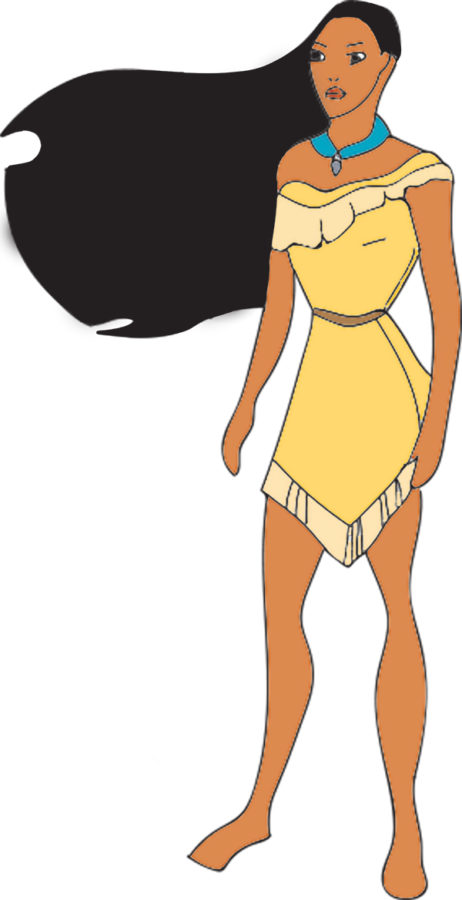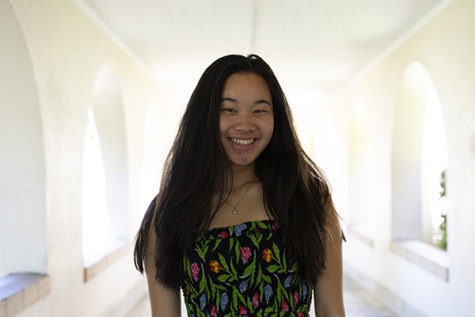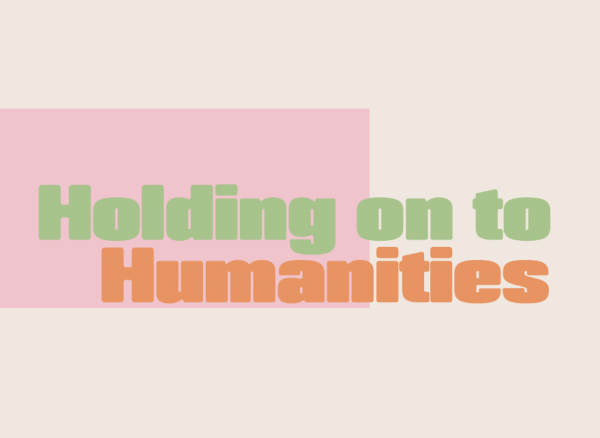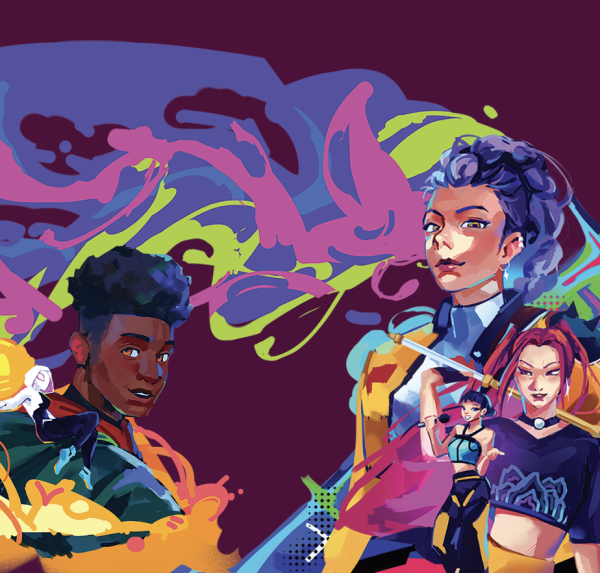Behind The Scenes
“Fairy tales are really a great example of evolving cultural standards…” -Erin Angell, Paly English teacher
Once Upon A Time…
A child, mesmerized by the magic and beauty of an alternate reality shining from the pixels of their television, becomes engaged in their imagination and is swept out of their living room. For many, their childhood’s have been shaped by the marvelous stories produced by Walt Disney Pictures, an internationally known American film studio. A few classic characters, such as Snow White, Pocahontas and Peter Pan, are well known beyond the realm of adolescence, yet the authentic tales from which these stories were derived are widely unknown. The principles from which these films were created are representative of cultural standards and stories from the various time periods they were drawn from.
The Fairest of Them All
Most are familiar with the princess dubbed the “fairest of them all” and the animated dwarves who chorused while marching to work. The classic fairy tale popularized by Walt Disney, “Snow White and the Seven Dwarves,” is a retelling from the first edition of the “Grimms’ Fairy Tales,” which was transformed into a more amicable adaptation of the original story.
After Snow White is poisoned by her stepmother, the Evil Queen, her awakening by “true love’s kiss” is unabashedly romanticized by Disney. Contrastingly, the original story is absent of the idea of “true love’s kiss” and describes Snow White’s awakening as an accident. As an unconscious Snow White drops to the ground, the impact causes her to cough up a piece of poisonous apple, and she is brought back to life.
Additionally, the celebrated seven dwarfs, named after their individual personalities in Disney’s retelling of the story, are all charming fabrications by the Disney writers. The film presents the endearing animated characters singing and dancing about, yet in the original Brothers Grimm story, the dwarves are in fact nameless and impersonal.
Although, the Brothers Grimm version of Snow White lacks the liveliness and light-hearted atmosphere of Disney’s version, the original tale displays the nature of the more dismal tales told to children in the 19th century. As time passed, society deviated from these more admonishing stories to reproductions that enhanced the imaginations’ of children.
The Boy from Neverland
Peter Pan lived in Neverland and was known for an everlasting boyhood and a group of friends called the lost boys. Displaying a lack of rules and a multitude of adventures, Disney’s version of the tale is the result of adaptations spanning over the past century, omitting unwelcome details of the story’s inspiration.
The story was based on true events occurring in the late 19th century when J.M. Barrie, the author of Peter Pan, experienced the tragic loss of his brother. Their mother, forever traumatized, was comforted by the thought of her golden child remaining a young boy forever, a concept that is otherwise seen as the inspiration of the tale.
Later in his life, following a divorce, Barrie befriended a family who would later become his inspiration for Peter Pan and formed a strong friendship with the two sons. Because of this robust connection, Barrie gained custody of the boys when their parents died from illness, disregarding their parents’ intention to leave them in their aunt’s care. This is seen as a plausible origin of the “lost boys,” a pillar of the story. Barrie was repeatedly accused of being a child predator, especially following the scandal with the children, but he was never convicted.
The accusations concerning Barrie led people to question whether the original story of Peter Pan conveys the message that children should fear the potential danger of relationships with adults, something that changed as the story evolved. When the tale of Peter Pan first came out, the conversation regarding pedophelia was more casual, allowing it to be subtly mentioned in children’s stories without much commentary. Today, pedophilia is taken much more seriously and therefore, cannot be mentioned in a casual manner in kids tales. Disney has reinvented the story to meet today’s cultural standards and has created a lighter, more joyous story focusing on the theme of children living on forever and savoring unending and reckless fun.
Colors of the Wind
The first Native American Princess, Pocahontas, is known for her distinctive cultural identity and a love story with English settler John Smith, also a fictional character created by Disney. Pocahontas was portrayed in the film as a strong, beautiful and independent woman, but in reality, she was mistreated by the English Settlers due to her race and sex. Though Pocahontas captured the hearts of many viewers with her unique fairytale, her true story unveils the fact that she was forced into marriage because of her gender and social status. During this time, women were commonly forced into marrying older men because they were considered to hold little power in relationships. Due to the many disadvantages Pocahontas and other women of minority races experienced at the time, the love story Disney portrayed between Pocahontas and John Smith never would have occurred.
The fictionalized film was created to provide a younger audience with a historical romance, yet in reality, this princess’ life lacked both. Pocahontas is a princess devised from the real story of a woman named Matoaka, who was 12 years old when English settlers began to colonize the “new world” and disrupt the lives of Native Americans. John Smith was one of these settlers, and he was captured by the Powhatan tribe and nearly executed after he arrived to America. Matoaka is said to have saved his life by throwing herself over his body. Unlike the film, Matoaka and John Smith were not romantically involved due to her young age. Instead, Matoaka was estimated to have died around the age of 21 after being held hostage and forced into marriage with another English colonizer.
The character of Pocahontas is remembered as a princess that lived happily ever after with the love of her life, not as the woman she truly portrayed; one who was married against her will and taken advantage of due to her cultural background.
Happily Ever After
Walt Disney Productions has created hundreds of family-friendly movies for over half a century and continues to drive family entertainment into the future. In a world where perfection is nonexistent, fantasy and imagination create opportunities for visionary individuals, young and old, to find an escape and vicariously experience a happily ever after. Even though perceptions of the fairy tales will continue to shift over the years, the importance of their origins will never fade as they reveal previous societal and cultural norms.

When she’s not busy with school, Chloe loves spending time at the beach. This Paly senior joined the C mag team because of the freedom that allows...









